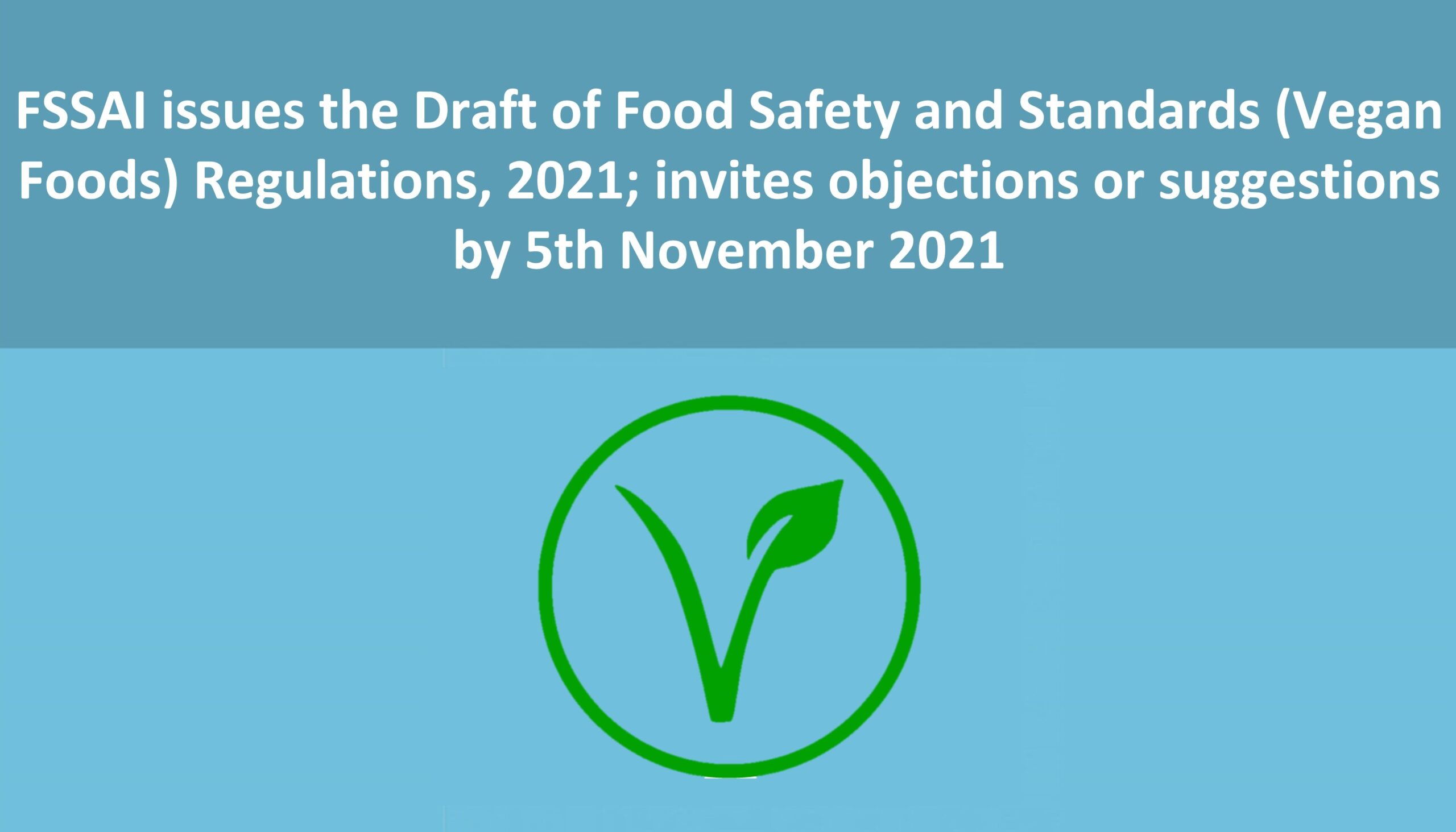The Food Safety and Standards (Fortification of Foods) Regulations, 2018 (Regulations) has come into force on 2nd August 2018 and Food Business Operators are required to comply with all the provisions of these regulations by 1st January, 2019.
The Regulations provide a minimum and a maximum range for fortification of staples like wheat flour (atta), maida, rice (with Iron, Folic Acid and Vitamin B12), double fortified salt (with Iodine and Iron), vegetable oil and milk (with Vitamin A and Vitamin D); the dosage of the micronutrients has been adjusted so that they provide 30 to 50 percent of the daily requirements. In Wheat Flour and Rice fortification, bioavailable sources of Iron have been added. Further, Vanaspati fortification has been excluded.
Responding to a few concerns which have arisen on these Regulations, the Food Safety Standards Authority of India (“FSSAI”) has rolled out a comprehensive set of ‘Frequently Asked Questions’ (“FAQs”), along with the answers, for better understanding of the Regulations.
Few important FAQs have been listed below:
Q: Is food fortification mandatory or voluntary?
Ans: There seems to be some confusion on whether fortification is mandatory. It is clarified that fortification continues to be voluntary. However, if any staple claims to be fortified, the standards as notified have to be followed. The intent is to ensure that the interest of the consumer is protected and the +F logo can only be used if the staple is fortified as per the regulations.
Q: How is the micronutrient status of Indian population assessed?
Ans: The data on micronutrient deficiencies is derived from Govt. of India’s National Surveys (RSOC / NFHS-4, 2015-16), and from the surveys / studies conducted by the most eminent scientists of the prestigious National Institute of Nutrition (NIN), under the aegis of Indian Council of Medical Research (ICMR), Govt. of India.
Q: Is Food Fortification a replacement to dietary deficiency?
Ans: Food fortification is a “complementary strategy”, and “not a replacement of balanced, diversified diets” to address malnutrition. Dietary diversification is indeed the best choice but in the current scenario it may be difficult to achieve by everyone, therefore a more universal approach is needed to address the issue. Dietary diversification, supplementation and food fortification are not “Either / Or” choices but “Complementary strategies”. Fortification only bridges the gap between the need and actual consumption of required micronutrients through food.
As per the 68th Round of Household Consumer Expenditure Survey10 across Socio-economic Groups, conducted by NSSO, Government of India, 2011-12, the consumption levels of fruits and vegetable, as well as of meat, fish and eggs are very low which are the best sources of micronutrients. People in India consume large amounts of cereals (about 300g/day), Fair amount of oil (about 25g/day) and milk (about 170 g/day), and very low intake of other foods such as vegetables, fruits and eggs / meat and fish. Consumption of vegetables other than potatoes is about 50g/day and of fruits is about 30g/day. The average weekly consumption of eggs is about 2 eggs per person and of meat is about 70g. The National Nutrition Monitoring Bureau (NNMB), and the latest Rapid Survey on Children (RSOC) reveal that the intake of foods rich in micronutrients is far less than the recommended intakes.
As per the selected state-wide surveys conducted by the National Nutrition Monitoring Bureau (NNMB) of National Institute of Nutrition (NIN), Govt. of India:
- Over 86% of Indian population is not consuming enough vitamin A-rich foods. Hence, almost 62% of Indian population has low serum blood levels of vitamin A; and
- about 50%-94% of people in different states across India, suffer from vitamin D deficiency.
Q: Thalassemic patients or people on low iron diets should not consume foods fortified with iron. How has FSSAI addressed this concern?
Ans: Food Safety and Standards (Fortification of Foods) Regulations, 2018 distinctly mentions that the package (label) of food fortified with Iron i.e. Wheat Flour, Maida, Rice and Double Fortified Salt shall carry a mandatory declaration: “People with Thalassemia may take under medical supervision”.
Q: Will regular intake of Fortified staples cause any adverse effects if entire meal is fortified?
Ans: The dosages added to the staples are adjusted to provide only 30-50 percent of an individuals’ daily nutrient requirement. To take care of any concerns, the standards of fortification have been developed based on detailed analysis of consumption pattern, RDA requirements, dietary diversification, and compliance to supplementation intake. Less than 0.02% of nutritional premix is added as a fortificant, which is well below the Tolerable Upper Limit as per FAO/WHO guidelines. These standards have been developed by the Scientific Panel on Fortification and Nutrition which include eminent public health experts from premier academic and medical institutes such as AIIMS, ICMR, NDRI, Nutrition foundation of India along with representations from government like Ministry of Women and Child Development, etc.
Q: Are the vitamins and minerals added to the food natural or synthetic in nature?
Ans: Micronutrients are produced in plants and animals through enzymatic processes. The industrial production of synthetic micronutrients is carried out through microbial fermentation, or chemical synthesis, followed by extraction.
Many fruits and vegetables are good sources of vitamins, like oranges for vitamin C. On the other hand, animal products like milk, meat and fish are better sources of vitamins A, D, E, B12 etc. One would think that natural vitamins are superior to synthetic because it relates to fresh fruits, vegetables and food. Comparative bioavailability studies in humans have also shown very small and insignificant differences between synthetic and natural vitamin C, regardless of the subject population, study design or intervention used.
For using vitamins from dietary sources, besides their availability and affordability, there are issues related to adjusting potency or dosage, their bioavailability, and food sensitivities of the population. However, irrespective of the source, whether natural or synthetic, the molecular structure and activity or potency of a vitamin is identical.
Q: How is food fortification cost-effective?
Ans: The incremental cost of food fortification is minimal (Rs. 0.02/ litre of milk, Rs. 0.10/ Kg of wheat flour and Rs. 0.10/ Kg of edible oil). By incurring these minimal costs, the disease burden of widely prevalent problems like anaemia can be reduced. It is a well-established fact that micronutrient malnutrition can impose significant costs on economic development in terms of reduced labour productivity, increased healthcare costs and overall growth and development of the nation.
As per Copenhagen Consensus (2008), one rupee spent on fortification will yield nine rupees’ benefits to the economy.
Source: Food Safety and Standards Authority of India




